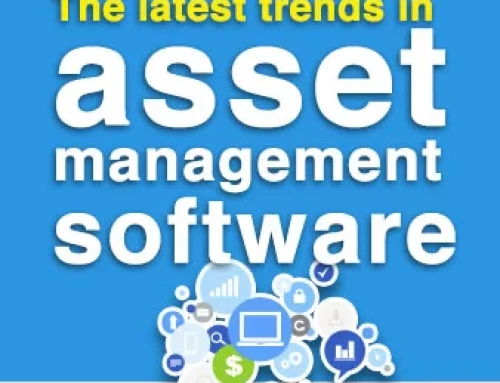How is Big Data Analytics shaping up the Internet of Things?
Influencing the IoT landscape
Big Data Analytics is an important enabler when it comes to moulding the Internet of Things (IoT). Big data and loT make a significant impact on companies’ ability to capturе and analyse data to drive business decisions. Let us see the top 9 ways in which big data analytics is shaping the Internet of Things (loT).
Big Data Analytics and IoT are creating a transformative digital landscape that is shaping in the direction of each other. The IoT brings in multiple streams of data that require sophisticated analytical tools to derive valuable insights. Big Data Analytics is a key tool in the processing and merging of the horror of data into relevant patterns from this huge flood of information.
Real-time analytics, machine learning, and predictive modelling improve decision-making processes by maximising the use of resources and promoting preemptive actions against real-time changes. This integration enables industries to access previously untapped levels of efficiency, security, and innovation potential, laying a solid foundation for IoT-integrated smart environments.
How Big Data is connected to the IoT?
The IoT and Big Data have a synergistic relationship, hence creating a very powerful collaboration.
IoT stands for the huge network of inter-communicating devices that communicate and share data in real-time. These IoT devices act as data suppliers, reporting information to centralised systems continuously. Whereas, Big Data Analytics processes these readings and differentiates between useful patterns, trends, and correlations.
Big Data platforms are inherently scalable and flexible enough to allow easy data processing generated by the increasing number of IoT devices. Here, real-time analytics are the ones that give instant responses to changing environments, whereas machine learning algorithms convert historical and current data into predictive modelling based on future events.
Now, let’s dive deeper into the topic to uncover the treasure of ways in which Big Data Analytics moulds the Internet of Things.
Top 9 ways Big Data Analytics is shaping the Internet of Things
Here we will discuss crucial ways in which Big Data Analytics is influencing the IoT landscape:
-
Data processing and storage
In the world of IoT, Big Data Analytics is transformative with regards to data processing and storage. Effective data processing is necessary since IoT devices produce large amounts of information. Data management platforms are scalable and can handle this rush, ensuring the storage and processing resources work smoothly.
Solutions to distributed computing and storage are the ones that allow organisations to work with large datasets without bottlenecks. This capability not only facilitates real-time insights but also enables the needed historical analysis for predictive modelling.
-
Real-time processing
Real-time processing is a critical aspect of the synergy formed by Big Data Analytics and IoT. This functionality allows real-time analysis of large amounts of data generated by IoT devices as they send the data. Organisations that gain insights rapidly by reading sensors, event logs, and other steady data streams tend to make immediate decisions. In cases such as predictive maintenance, emergency response systems, and dynamic optimisation of industrial processes, this is very crucial.
Real-time processing speeds up IoT applications’ reaction time when they have the freshest information to efficiently and effectively optimise performance across multiple domains.
-
Data intеgration
Data integration is a key factor in Big Data Analytics and the Internet of Things. It is the seamless integration of several datasets developed by IoT devices, from sensors to connected applications. This procedure harmonises heterogeneous data types, formats, and structures for the development of an integrated data set that is suitable for in-depth analysis.
Organisations can now discover useful information and identify patterns and correlations through successful data integration. This synergy enhances decision-making in business and gets the best value out of vast and diverse data generated by IoT ecosystems.
-
Prеdictivе analytics
Predictive analytics distinguishes itself as an inflection point in the nexus between Big Data Analytics and the IoT. This advanced characteristic allows organisations to anticipate problems, allocate resources efficiently, and avoid potential crises.
Moreover, predictive analytics enhances decision-making with relevant information in industries like health, manufacturing, and logistics. By predicting outcomes, companies could set their businesses to reduce downtime by putting preventative measures in place, thereby enabling themselves to build more efficient and resilient systems.
-
Sеcurity and anomaly dеtеction
Security and anomaly detection are the biggest challenges in Big Data Analytics and IoT incorporation. Big Data Analysis refers to the analysis of large datasets generated by IoT devices to point out unusual patterns or possible security vulnerabilities. It enables rapid identification of cyber threats and suspicious activities within IoT ecosystems by analysing deviations against established norms. This is a proactive approach that enhances cybersecurity measures and IoT security challenges to safeguard confidential information and ensure the stability of integrated systems.
Also, security and anomaly detection are components of IoT risk reduction. It helps build trust that strengthens resilience against emerging threats due to their interconnected nature.
-
Improvеd dеcision-making
Another critical aspect of this integration is improved decision-making. IoT data sets produce actionable insights from various systems, helping organisations make tactical decisions in varying fields from health to finance and smart cities. Real-time processing of data indicates that decisions are made with the latest information, thus enhancing agility when responding to changing conditions.
-
Enhancеd customеr expеriеncе
When Big Data Analytics is combined with the Internet of Things, improved customer experience is achieved. By studying the data produced by various IoT devices, organisations gain deeper insights into the behaviour, practices, and patterns of customers. This rich variety of information allows the creation of customised and specialised services.
Personalised services in areas like retail, medicine, and smart homes create individualised products that enhance customer satisfaction and loyalty. Real-time processing means operations respond within seconds, which is significant for a smooth and dynamic user experience.
-
Cross-industry impact
The synergy between Big Data Analytics and the IoT has transformative effects spanning far and beyond industrial boundaries. This partnership promotes creativity by breaking down barriers and making it easier for people from different industries to share ideas and technologies.
For instance, IoT data insights from manufacturing could enhance logistics-related supply chain optimisation and transportation industry use cases. The combination of healthcare and IoT knowledge enables remote patient monitoring, magnifying the positive impact of medical care.
-
Dynamic resource allocation
Another outcome of blending Big Data and the Internet of Things is enabling dynamic resource allocation. Big Data Analytics can scale resources flexibly according to the workload or number of connected devices as it analyses various dense sets of information. This makes power distribution in scenarios like smart grids efficient, while the operational agility of resources is optimised to where they are most required in industrial IoT.
Conclusion
Various Big Data technologies and tools are easily available from vast IoT networks to develop efficient and real-time data analysis. However, data analytics differs based on the types of data gathered, the various data sources, and the tools used for analysis. Such a large system can process the data well, but it can also pose some challenges during data processing.
Above all, the synergy between Big Data Analytics and IoT paves the way for a smarter, more efficient, and resilient future. It is a dynamic duo force reshaping how we collect, analyse, and derive value from the vast ecosystem of IoT-generated data.
Must read:
- Modernising FOI: Technology’s Influence on Information Access
- How UK councils can leverage technology to sustain services
- From legacy systems to custom apps: Modernising your IT infrastructure
- The latest trends in asset management software for UK councils
- How council mergers are improving service delivery challenges?





